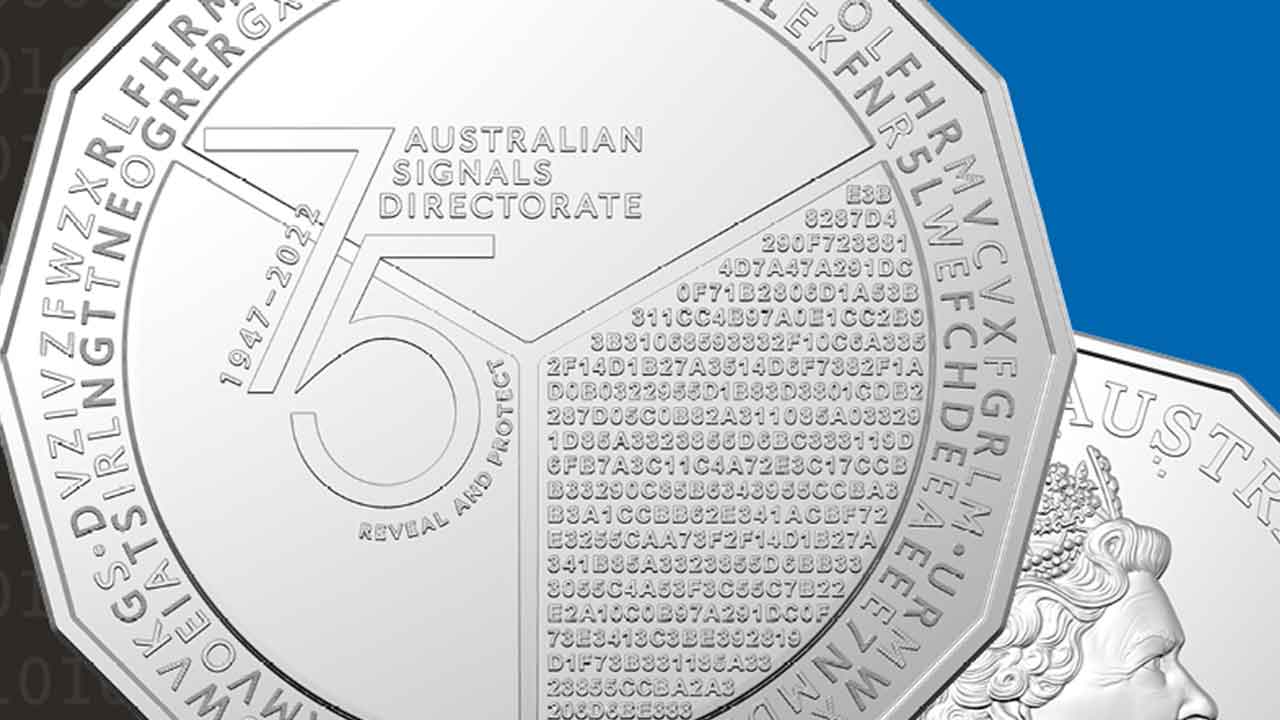Coins covered in coded clues will test your spy skills

A new, limited edition 50-cent coin covered in coded messages is more than just a mental puzzle for coin collectors - its creators hope it can help identify some of Australia’s next foreign intelligence recruits.
The commemorative coin was released on Thursday to mark the 75th anniversary of the Australian Signals Directorate (ASD), the country’s foreign intelligence cybersecurity agency.
Though they won’t be available for circulation, 50,00 of the unique coins will be available to purchase from the Royal Australian Mint.
Each coin features four levels of coded messages that become more difficult to solve - though clues can be found on either side of the coin.
ASD Director General Rachel Noble said the coin celebrated the work of the members of the agency and the evolution of code-breaking over the past seven-and-a-half decades.
"Back in World War II, our people, military and civilian, and mostly women … used pencil and paper to decode Japanese military codes, and then re-encode them to send them out to the allies to let them know where Japanese war fighters were," she said.
"We have used that part of our history in different layers, which represent the progress of encryption and technology through our 75 years."
The puzzling currency also serves another purpose, with Ms Noble adding that those who can crack the codes could be "pretty well-placed" to work at the ASD.
"We thought this was a really fun way to engage people in code-breaking with the hope that, if they make it through all four levels of coding on the coin, maybe they'll apply for a job at the Australian Signals Directorate," she said.
Royal Mint chief executive Leugh Gordon said the coin was created with the help of cryptography experts, but that even with their help it still proved a challenge to get the codes onto the coin.
"While the 50-cent piece is Australia's biggest coin, it still doesn't have a lot of surface area," he said.
"Ensuring people could see the code to decrypt it was one of the challenges our people were able to solve with ASD, to create a unique and special product."
It's not the first time secretive workplaces have used unusual recruiting drives, with the Australian Secret Intelligence Service releasing an online test targeting Australia's next generation of spies in 2017, while ASIO (Australian Security Intelligence Organisation) took to Instagram last year to show the secrecy surrounding the lives of modern spies.
Ms Noble said those who crack the code won't get their hands on any top secret information, but instead will find "some wonderful, uplifting messages".
"Like the early code breakers in ASD, you can get through some of the layers with but a pencil and paper but, right towards the end, you may need a computer to solve the last level," she said.
Image: Royal Australian Mint
